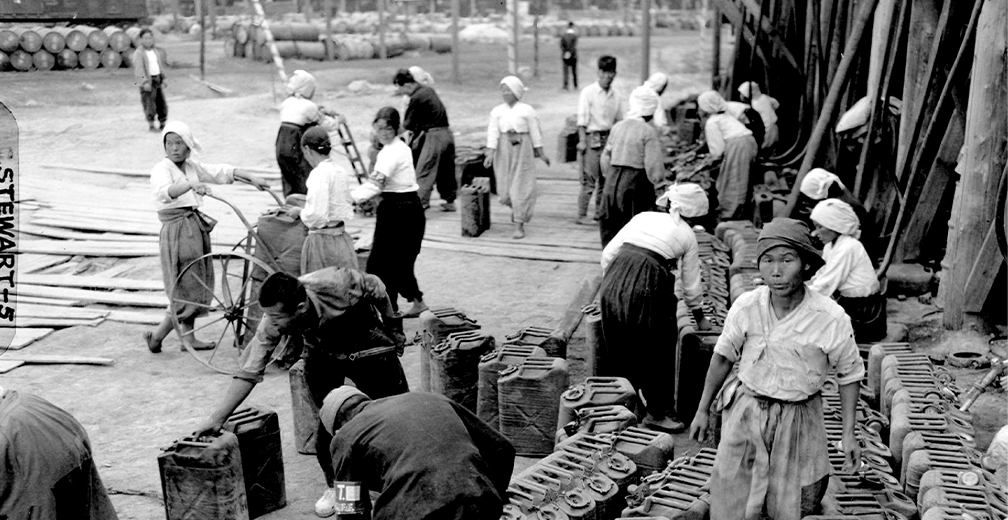The Korean War and Busan

The Outbreak of the Korean War and Busan as the Wartime Capital
In the early hours of June 25, 1950, the Korean War broke out unexpectedly, catching South Korea completely unprepared. Within days, more than half of the country fell into enemy hands, forcing the government and military to retreat southward. After brief stops in Daejeon (from June 27 to July 16, 1950) and Daegu (from July 16 to August 17, 1950), Busan was finally designated as the wartime capital on August 18, 1950.
Two major reasons contributed to Busan being chosen as the wartime capital

- The first was to ensure the safety of the government and the people of Korea. Busan's geopolitical location, situated at the southeastern tip of the Korean Peninsula and bordered by the sea, made it ideal for maintaining the government's functions while protecting refugees. The city was strategically important for preserving government operations and ensuring the physical and psychological safety of the public during the war.
- The second reason was to promote international cooperation and refugee relief. As a port city, Busan was also the perfect location to facilitate international cooperation. The United Nations Commission on Korea (UNCOK), established to address political and economic challenges on the Korean Peninsula, was based in Busan, making diplomatic and military cooperation with the UN easier. Additionally, Busan was the only port capable of handling the 2 million UN troops and over 5.5 million tons of military supplies, making it a vital hub for both military and humanitarian operations.
Busan: A Space of Overcoming National Crisis and Hope
-
During most of the Korean War, Busan functioned as the capital of Korea, serving as a hub of governance and a vital center for politics, diplomacy, economy, culture, education, healthcare, and welfare.
-
As high-level government officials, including the president and members of the National Assembly, relocated to Busan, along with cultural figures, key public institutions in the city’s old downtown and near Busan Port were swiftly repurposed for critical governmental functions.
-
Busan also became the focal point for international cooperation, hosting the activities of international organizations and embassies. It was a place where the principles of the United Nations—peace, human rights, and freedom—were put into practice. Essential wartime supplies, as well as relief goods for refugees, arrived at Busan Port from the United Nations and other international aid organizations.
-
Markets emerged around these goods brought into Busan as well as sustained the lives of countless refugees. The city also became a cultural epicenter as artists and cultural figures from all over the country gathered together.
-
Education continued through the establishment of the Wartime United University for displaced university students, while over 80 elementary, middle, and high schools operated as makeshift refugee schools in tents set up on beaches, mountains, and sports fields.
-
However, the infrastructure of Busan was insufficient to accommodate the flood of refugees. Makeshift homes, such as huts and shacks, sprang up in the hilly areas and mountainsides, creating a unique residential culture that overcame severe living conditions.


